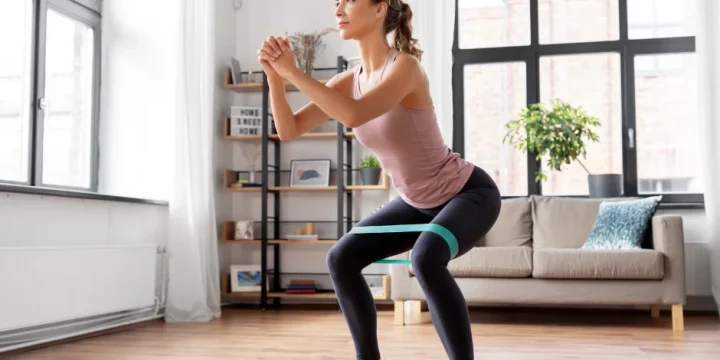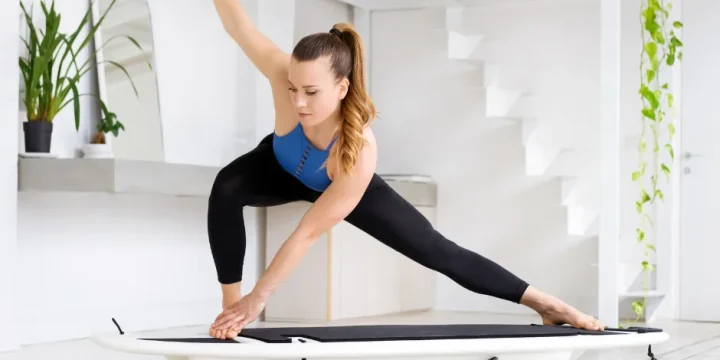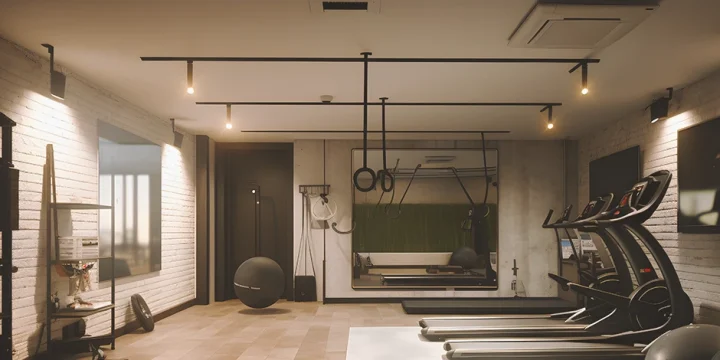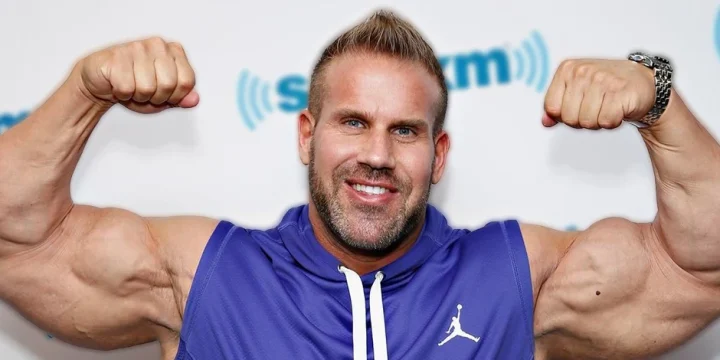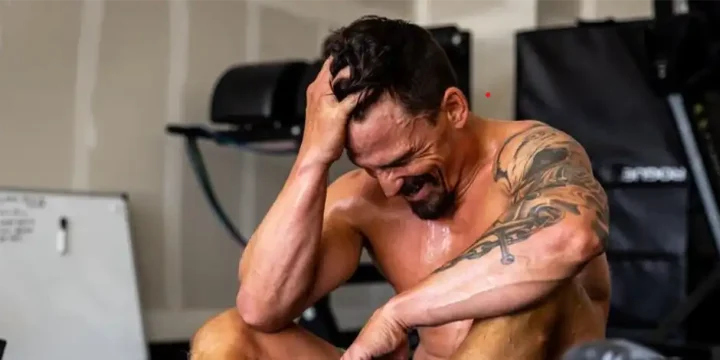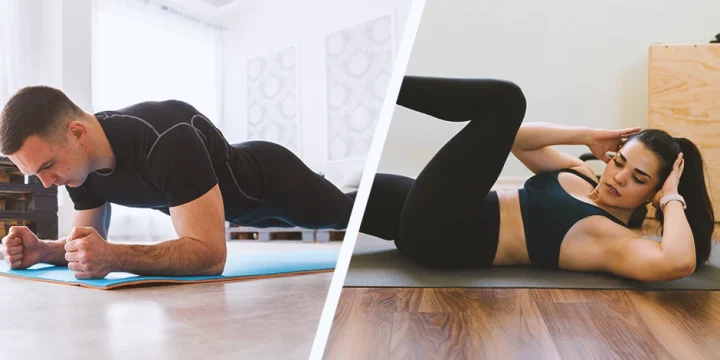Performing crunches on a cable machine has one significant advantage over doing them on the floor: you get to increase resistance by putting on heavier weights and doing fewer repetitions.
I’ve been using this exercise with my clients for years, as it never failed to deliver in terms of efficient muscle growth and increased core stability.
I’ve synthesized my knowledge and experience with clients into this article to show you how to do cable crunches properly. So let’s dive right in.
Quick Summary
- To perform cable crunches, attach a tricep rope to the cable station, choose your desired weight, and perform a crunch when both arms are bent before starting all over again.
- Engaging the abdominal muscles, maintaining a straight back, and initiating the lower back are ways of mastering cable crunches.
- According to studies published on the National Institutes of Health website, cable crunches build up all the abdominal muscles throughout the upper body, including the rectus abdominis, also known as the “six-pack.”
- Based on my extensive experience, I firmly believe cable crunches are one of the most effective exercises for achieving a strong and defined core.
How to Do Cable Crunches
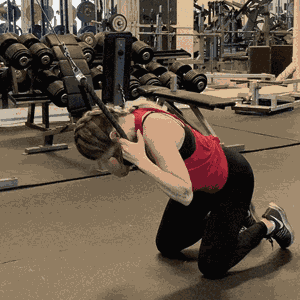
Cable crunches, also known as kneeling cable crunches, effectively define and strengthen the core, maintaining constant tension on the abs throughout the exercise.
This weighted exercise involves repeated pulling of the cable rope, contracting the muscles, a fact supported by National Library of Medicine research [1].
As a personal trainer, I've observed clients consistently develop firmer, more well-defined abdominal muscles with this exercise.
Here is a step-by-step guide to carrying out a kneeling cable crunch:
- Attach tricep rope handles to a cable station. Proceed to set up the carriage so that it is in the upper third of the cable machine. Depending on your height, adjust your starting position.
- Next, choose how much resistance you want — 22.5 pounds might be a great starting point. Gradually move to a heavier weight as you become more adapted to the exercise.
- Kneel facing the pulley, about one and a half feet away from the machine.
- Hold the tricep rope and brace your core. Once you start, you will feel a slight stretch on your ab muscles; if there is none, increase the weight. Ensure your body weight is on the shins.
- Perform a crunch by pulling both handles with bent arms. All this time, let your elbows be parallel to your hips.
- Maintain control of the exercise and slowly return to the starting point while maintaining tension on the pulley.
That completes one repetition.
You should do three or four sets of 10 repetitions for a start. Once you feel comfortable, you can add more weights to your crunch exercise program.

3 Ways to Master Cable Crunches

Proper technique, like engaging the abdominal muscles and keeping a straight back, is essential when performing cable crunches.
From my experience as a trainer, I've seen how understanding the anatomy involved in this exercise can significantly enhance its effectiveness.
For instance, different variations of cable crunches can target specific parts of the abdominal muscles, such as the rectus abdominis or obliques, leading to more targeted and effective muscle development in my clients.
Here are a few tips to ensure you're doing them in proper form:
1. Engage The Abdominal Muscles
Rather than using your hip flexors or triceps, move the pulley cable through a full-range motion with your abs. Try to keep the arms and hips motionless throughout the exercise.
2. Maintain a Straight Back
I always emphasize maintaining a straight back and not rounding or hunching over the abdomen.
If you find it difficult to maintain a good posture, try doing a bodyweight cable crunch first.
3. Initiate The Lower Body
Keep your lower body from sagging and relaxing by engaging your hamstrings and glutes throughout the exercise.
“One movement that allows you to create abdominal hypertrophy, the cable crunches. Do this workout correctly, and you'll exit with a very deep abdominal burn and hone the core muscles that help create a six-pack with visual impact.”
- Ebenezer Samuel, C.S.C.S Fitness Director
Benefits of Cable Crunch

There are numerous benefits to doing cable crunches, like improving core stability, and many of these I experienced first-hand in my own workouts, as well as through programs I designed and successfully implemented for my clients.
Engaging in regular core strength training, such as cable crunches, has also been linked to enhanced mental health outcomes, including reduced stress levels and improved body image, offering a holistic approach to fitness
Let’s take a look in more detail at the two most important benefits.
Cable Crunches Improve Body Posture
The cable crunch is a wonderful exercise for abs and to correct improper upper body posture since it targets your core, lower back muscles, and glutes.
Cable Crunches Enhance Your Stability and Core Strength
According to studies published by the National Institutes of Health, cable crunches build up all the abdominal muscles throughout the upper body, including the rectus abdominis, better known as the “six-pack” [2].
Continuous activation leads to a strong core, which is vital for carrying out complex exercises such as deadlifts.
Once you have built your core potency and stability, you can perform some other important exercises with more ease and less risk of injury.
Related article: Do Crunches Reduce Belly Fat?
2 Pro Tips for Safe Workout and Injury Avoidance

Proper technique in cable crunches, such as maintaining hip position and using a full range of motion, not only enhances effectiveness but also minimizes the risk of injury, making it a safe choice for various fitness levels.
Let's examine the positioning in detail:
1. Watching Your Hip Position
Like I always tell my clients, always keep your hips locked still and high throughout a complete set to avoid using the hip flexors and enable a complete ROM.
If you drop your hips low, you won't be able to perform a full crunch.
2. Using a range of motion
Get flexion in the spine by focusing on an ab crunch. The full ROM is very important. The spine should at least be neutral at the top and have full flexion at the lower end.
To achieve the full ROM and the activation your abs require, you must fully contract and maintain constant tension at the end of each repetition movement.
Deniz Efe, founder of Fitness Equipped, recommends performing each repetition slowly and making sure to exhale when contracting the abs and inhale during release.
Doing so will help one achieve the maximum effectiveness of cable crunches while reducing injury risk.
FAQs
Are Cable Crunches Vital for Building Abs?
Yes, cable crunches can be considered vital for building abs as they enhance your core by targeting your upper and lower abs. They offer more stimulation in the rectus abdominis than when using ab machines
What Exercises Complement Cable Crunches?
Exercises like leg raises, weight sit-ups, and planks complement the cable crunches as they target the same muscle group.
References:
- https://pubmed.ncbi.nlm.nih.gov/19376473/
- https://pubmed.ncbi.nlm.nih.gov/8976314/
About The Author
You May Also Like
